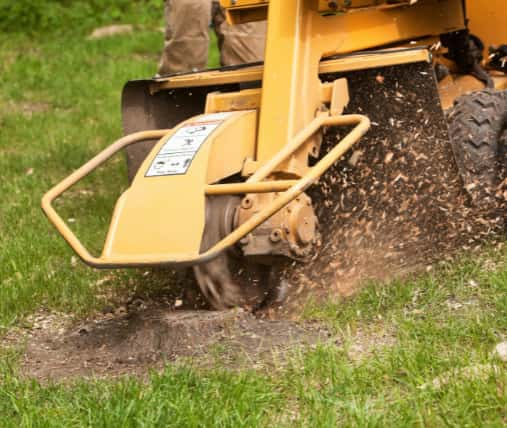A dense, overgrown tree canopy may look impressive, but it can also pose serious risks to both the tree and its surroundings. When branches become too heavy, they place immense strain on the trunk and root system, increasing the likelihood of breakage or collapse during storms. At LM Tree Surgery Winchester, we often help homeowners in Winchester, Hampshire manage trees whose canopies have grown out of balance — ensuring safety, stability, and long-term health.
Understanding the Problem of an Overgrown Canopy
A tree’s canopy is its main photosynthetic area — where leaves capture sunlight to fuel growth. However, when the canopy becomes excessively dense or uneven, it starts to cause problems such as:
- Excessive weight on the upper branches.
- Reduced airflow and light penetration.
- Increased risk of limb failure during high winds.
- Greater susceptibility to disease and fungal growth.
- Imbalanced growth leading to structural weakness.
If left unmanaged, a heavy canopy can threaten nearby structures, power lines, and even people below. Recognising the early signs and taking timely action can prevent costly damage and preserve the beauty of your landscape.
Signs That Your Tree’s Canopy Is Too Heavy
You don’t need to be an expert to notice when a tree is struggling under its own weight. Here are some common warning signs:
- Sagging or drooping branches: Large limbs bending downwards under their own weight.
- Cracks in major limbs: Stress fractures appearing where branches meet the trunk.
- Dense foliage with poor light penetration: Too little air or sunlight reaching the inner canopy.
- Excessive leaf shedding: The tree may shed leaves as it struggles to sustain its growth.
- Unbalanced shape: One side of the canopy appears heavier or denser than the other.
When any of these signs appear, it’s time to call in professionals like LM Tree Surgery Winchester for a full assessment.
Why a Heavy Canopy Is Dangerous
A heavy or unbalanced canopy puts your tree at risk of several problems:
1. Structural Instability
The extra weight causes uneven stress across the tree, especially at branch unions. This can lead to sudden breaks or even partial collapse during bad weather.
2. Increased Wind Resistance
A dense canopy catches more wind, acting like a sail. This not only increases the risk of snapped branches but can also uproot the entire tree during storms.
3. Reduced Air and Light Flow
A thick canopy limits ventilation and sunlight within the crown, creating damp conditions ideal for fungal diseases and pest infestations.
4. Root Overload
When a canopy is too large for the root system to support, the tree struggles to provide enough water and nutrients, leading to overall decline.
How Tree Surgeons Manage a Heavy Canopy
At LM Tree Surgery Winchester, we use several professional techniques to manage and rebalance heavy tree canopies safely and effectively.
1. Crown Reduction
Crown reduction involves carefully shortening branches throughout the canopy to reduce height and spread without harming the tree’s natural shape. This relieves weight from key structural limbs and restores balance.
2. Crown Thinning
Crown thinning selectively removes smaller branches throughout the canopy. It lightens the tree while maintaining its overall size, improving light penetration and air circulation. This technique also reduces wind resistance, making the tree more resilient during storms.
3. Deadwood Removal
Dead or decaying limbs add unnecessary weight and risk falling without warning. Removing them not only makes the tree safer but also improves its appearance and health.
4. Structural Pruning
For younger trees, structural pruning helps guide growth early on, preventing canopy issues later. By maintaining strong branch unions and a balanced shape, the tree grows stronger and more stable as it matures.
The Right Time to Address Canopy Weight
The best time to manage a heavy canopy is before it becomes a hazard. Ideally, trees should be inspected once a year to assess their condition, especially after major weather events. Pruning during the dormant season (late autumn to winter) is often recommended, as it allows the tree to recover before spring growth begins.
However, if branches are already hanging dangerously low or brushing against buildings, immediate attention is needed — regardless of the season. Acting quickly prevents further damage and keeps your property safe.
Long-Term Tree Health and Prevention
Preventing canopy overgrowth is far easier and safer than dealing with a weakened or storm-damaged tree. Ongoing maintenance offers several long-term benefits:
- Balanced growth and improved stability.
- Better resistance to storms and strong winds.
- Fewer pest and disease problems.
- Longer lifespan for mature trees.
- A healthier, more attractive landscape.
Regular inspections and timely pruning from experienced professionals like LM Tree Surgery Winchester ensure that your trees remain both strong and visually appealing.
Conclusion
When a tree’s canopy becomes too heavy, it can quickly turn from a natural asset into a safety hazard. Recognising the warning signs early and investing in proper maintenance can prevent structural damage, disease, and unnecessary loss. With expert care from LM Tree Surgery Winchester in Winchester, Hampshire, you can restore your tree’s balance, protect your property, and enjoy a safer, more beautiful outdoor environment for years to come.
Call us on: 01962 571 792
Click here to find out more about LM Tree Surgery Winchester
Click here to complete our contact form and see how we can help with your tree needs.

